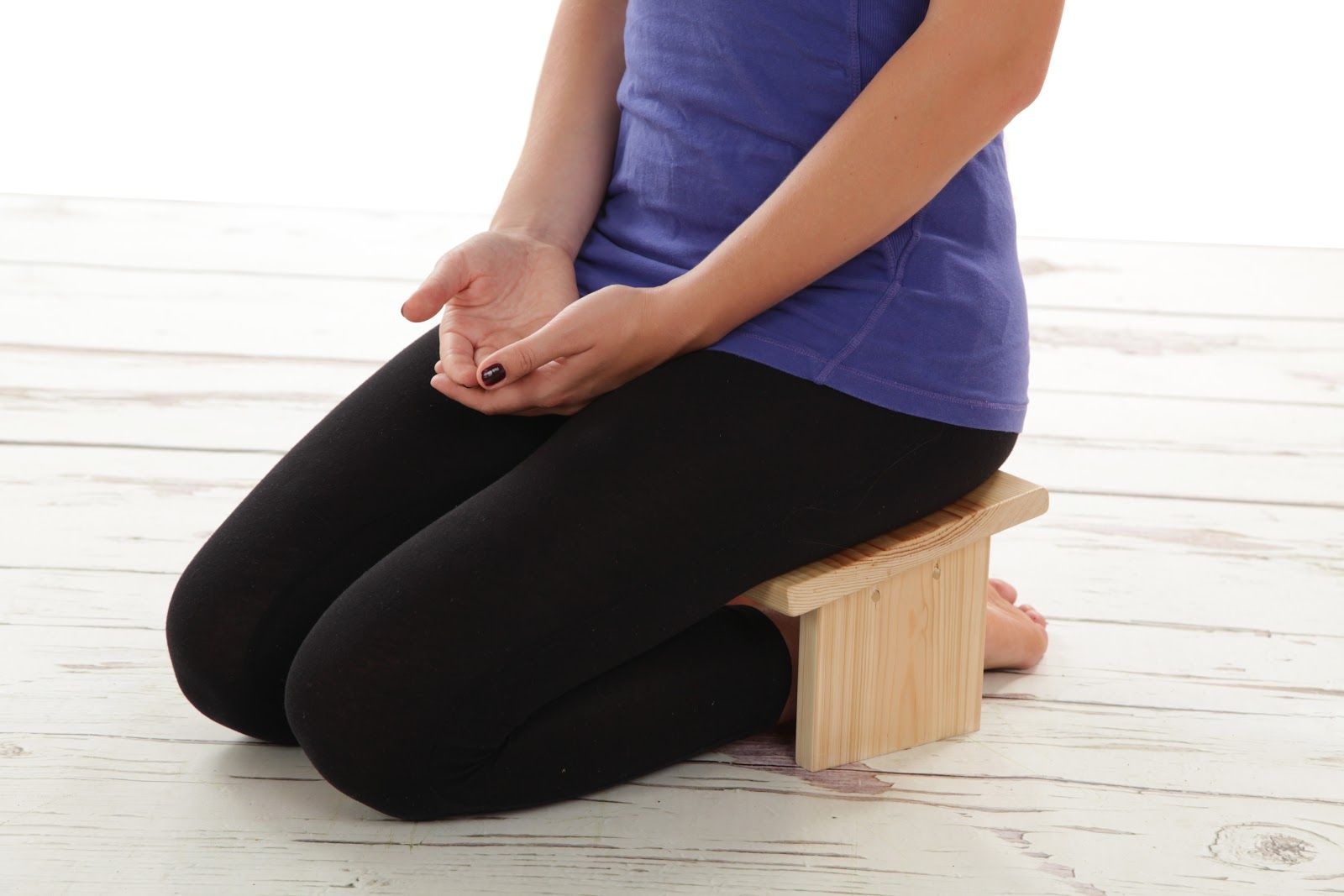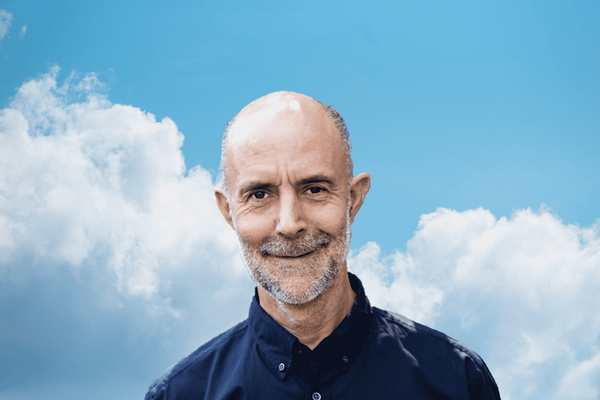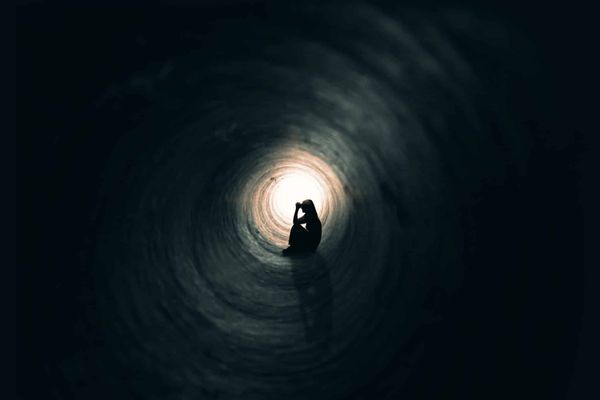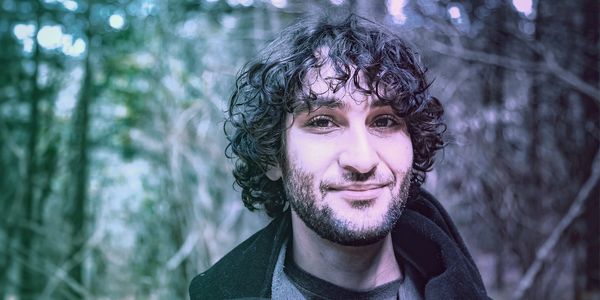Jordan Lejuwaan • • 11 min read
100 Hours of Meditation in 10 Days — My Stay in Buddhist Prison

I just returned from meditating for over 100 hours in the span of just 10 days.
Meditation is one of those habits that has officially entered main stream consciousness, and now everyone feels they should be doing more of it. 100 hours of it seems the ultimate way to cement the benefits of meditation once and for all, become super-human and change my life forever.
But did it work?
Several friends of mine have taken the plunge of a Vipassana (vih-paw-suh-nuh) meditation retreat and raved about the experience. “Life changing,” they said.
As a loud advocate of meditation and an avid experimenter with all things self-improvement, I had to see for myself.
I googled ‘vipassana portland’ and found a retreat center 2 hours away in Washington with openings in the coming weeks. I submitted an application and received an acceptance email a few days later. Woohoo!
A few weeks later I bought a comically expensive meditation cushion ($80 for a mini beanbag?) and hopped on a train up to beautiful Centralia, Washington.
The Rules
Upon arrival, all ‘students’ were required to sign our names, saying we understood the stipulations of the course:
- No talking, touching or eye contact with other students
- Males and females are segregated at all times
- No intoxicants, sexual activity, stealing, telling lies, killing or otherwise lude behavior
- No reading, writing, electronics or any other means of communication or entertainment
- Strict adherence to the Vipassana method of meditation so that we could give it a ‘proper trial’ during these 10 days (this included religious rites, praying, etc.)
- Most important of all, to finish the 10 day course
These requirements probably sound extreme at first glance. Their intention is to eliminate all distractions so one can go go as deep into ones own being as possible.
Our daily schedule would be as follows:
4:00am – Morning wake-up bell
4:30-6:30am – Meditate in the hall or in your room
6:30-8:00am – Breakfast break
8:00-9:00am – Group meditation in the hall
9:00-11:00am – Meditate in the hall or in your room according to the teacher’s instructions
11:00-12:00pm – Lunch break
12pm-1:00 pm – Rest and the option to speak with the teacher
1:00-2:30 pm – Meditate in the hall or in your room
2:30-3:30 pm – Group meditation in the hall
3:30-5:00pm – Meditate in the hall or in your own room according to the teacher’s instructions
5:00-6:00pm – Tea break
6:00-7:00pm – Group meditation in the hall
7:00-8:15pm – Teacher’s Discourse in the hall
8:15-9:00pm – Group meditation in the hall
9:00-9:30pm – Question time in the hall
9:30pm – Retire to your own room
10:00pm – Lights out
That’s a daily dose of roughly 10 hours of meditation and an 90 minute video discourse by S.N. Goenka, the creator of this particular flavor of meditation.
The Technique
Before I go any further I’d like to explain the Vipassana meditation technique. I had zero knowledge about Vipassana going into the retreat, and was surprised to learn a technique unlike any I had heard of before.
According to Goenka, Vipassana was the method of meditation used by the Buddha to achieve enlightenment. This is, of course, the subject of much scholarly debate since none of Buddha’s teachings were written down until after his death. Either way, it is an enticing possibility :)
The goal of Vipassana is to realize the true nature of reality by observing sensations throughout the body.
By simply observing an itch without craving for it to go away, or observing a pleasurable sensation without wishing for it to stay, you learn to observe objectively on all levels of life.
This also reinforces the truth that everything in life is impermanent. You realize that the ache in your left knee eventually passes away just like the pleasant vibration in your pinky finger.
“This too shall pass.”
Vipassana also teaches that deep-held aversions and cravings from your past called sankaras will rise to the surface as bodily sensations. This allows you to let them go through the same practice of objective observation. The end goal is to get rid of all your past sankaras.
Now back to the story!
Day 1
Wow. 4am is really early.
For the first few days, we are instructed to simply observe the sensations in our nostrils and the small area above the upper lip. If we feel two sensations at once, we are to focus on the more subtle of the two.
The first 2 hour meditation in the morning is a rude awakening.
2 hours is a LONG time. My brain is constantly attempting to calculate how much time is left (even though that’s not what we’re supposed to be doing!). It’s pretty discouraging when you realize you’re only halfway through after an hour.
After breakfast I rush back to my room to grab an hour of sleep before meditation begins again.
Sitting still is exhausting.
I’m still tired after that nap so I use the time after lunch for another nap.
The meditation sessions are tedious, but doable. Although I suppose you could say that about anything. I keep reminding myself that all I have to do is sit here! What could be easier?
Rationally I know it’s a walk in the park compared to a sports hell week… but it sure doesn’t feel like it.
I make it to the night-time discourse and expect a lecture reminiscent of high school history class, but I’m pleasantly surprised by Goenka. He is full of jokes and brings to light many poignant insights about the first day.
Lying in bed and reflecting on the day, I realize that the combination of no talking, no eye contact, strict eating/sleep schedules and mandated meditation makes me feel like I’m in a Buddhist prison.
And this is only Day 1. What did I get myself into?
Day 2
Today I can distinctly feel subtle sensations in my nostrils. There are little vibrations, itches, warm and cold spots, wet & dry sensations, and some I’m unable to label.
My mind continues to wander every 30-60 seconds, but I’m able to quickly notice this and return my attention to the breath.
Today is substantially more comfortable than yesterday because I discovered a wondrous invention: the meditation bench!

Lotus (cross-legged) is not for me, and I’ll always felt very grounded and powerful in thunderbolt pose (sitting on your knees). My knees begin to throb about 40 minutes into the hour, but that will get better.
Did I mention the food here is amazing? It could have something to do with it being our only respite from meditation besides sleep, but still! It’s all vegetarian + gluten-free and I don’t miss meat at all.
Day 3
Big problem: I can’t stop swallowing.
During the morning meditation session my mouth was very full of saliva for some reason, and I kept having to swallow.
This soon developed into a downward spiral of trying NOT to swallow, which of course put more saliva into my mouth.
Then I started to worry whether my constant swallowing was bothering my meditating neighbors. I heard them begin to swallow after I do. Am I contaminating the whole group? It’s honestly difficult to remember a time when I’ve felt more miserable.
I go to speak with the instructor during lunch. He laughs and says ‘Yeah… that can happen.’ He says the issue is actually the perfect teacher for Vipassana. I should remain equanimous with my swallowing just as I am supposed to be okay with any other sensation.
I mentally repeat to myself that swallowing is fine a 100 different ways during the remaining meditations that day. Nothing helps. I’m swallowing roughly twice a minute. Sometimes 4-5 times in quick succession.
Even worse, I’m still swallowing as I’m falling asleep. I’m not thinking about it anymore, so maybe it’s just a physiological pattern at this point. Dear god I hope sleep fixes everything.
Day 4
Sleep did
notfix it. I woke up swallowing during the night. It’s still happening at 4am.
Worse yet, today is Vipassana Day, the first day that we’ll be practicing the true form of the technique. This means two things:
- We’ll be sweeping our attention throughout the body rather than focusing only on the nostrils
- We’re asked to remain completely still for the entire hour in group sittings.
Our first ‘real’ sitting turns out to be the longest we’ll ever have to endure. A full 2 hours. No moving.
I start off in a funky position and stubbornly decide to mentally fight off the pain for the rest of the time instead of just adjusting. Everyone else seems to be just as determined. The entire hall is silent.
That silence is broken by something horrible. One girl begins sobbing. It’s not clear if it’s from physical pain, or some emotion that came to the surface, but either way it’s really tough to hear.
The worst part? No one comes to her aid. She’s there sobbing uncontrollably for a good 5 minutes and not even the teacher moves to comfort here.
We’re told later that this is normal. Vipassana is about dealing with these emotions yourself. I still don’t like that answer. :/
In case you were wondering, the swallowing has not stopped. It has slowed a bit because my mind is also occupied by physical pain. Progress?
Day 5
The not-moving is easier today. Getting into the perfect position at the start is crucial for making the hour bearable.
The swallowing is still there. I’m beginning to think I’ve caused permanent damage.
Have I reprogrammed my glands to produce more saliva?
I came here to master my mind, but I feel like I have less control over it than ever.
Oh wait, I’m supposed to be equanimous with my swallowing. Breath. Breath. It’s okay. Breath…
That mental loop played on repeat all day.
Day 6
A miracle has happened. The swallowing has stopped!!!


I spent today meditating in my room instead of the hall so that I wouldn’t be so worried about bothering others. This allowed me to become okay with the swallowing. Then it slowly disappeared.
Nothing can stop me now. Day 10, here we come!
Days 7 – 9
I’ve started to cheat a little bit :p
I brought along my Kindle and have been journaling in it during my free time. I’ve had SO many ideas and realizations during my meditations. It would be a shame to not record them and forget them all.
I’ve written a massive list of all the ways I can help my girlfriend, my siblings, my parents and step-parents, my best friends, some old friends and even some strangers I’ve met recently.
I realize that my love for others has been fairly selfish up to this point. I love people that are easy to love. I love when it serves me to love. Even when I do have love someone, I know it can be so much stronger.
I’m going to love more, starting with this list.
Day 10
Today we regain the ability of speech and can talk with our fellow meditators.
It’s strange to talk again. We have a meeting with both the men and women, explaining the procedures for cleaning up and leaving, and it’s almost overwhelming. So many stimuli. I almost want to go back to no talking.
I’m shocked to hear how different some peoples’ experiences were from mine. Some even wish they could go on for a few more days. Some say they aren’t looking forward to going home, whereas I’ve been counting the days since Day 2.
Still, everyone had a hard time. One guy is on his 8th Vipassana and says it never gets easier. Different issues arise each time. That’s why he keeps coming back each year. “Gotta keep doing the hard work.”
I enjoyed seeing how everybody’s personalities compared to the assumptions I made about them during the last 9 days. We couldn’t talk, but I could still observe their mannerisms, their outfits, the ways they walked. I extrapolated those details to little stories about some of the more memorable characters. Some even had nicknames. Your mind does a lot of funny things when you aren’t doing anything for 10 hours a day :)
Day 11
I am ECSTATIC to be back home. I’m overjoyed to see Sandra (my girlfriend). Music sounds absolutely amazing. Life is good.
I’ve heard many people say it’s a huge shock to go back to the real world after a Vipassana. Too many lights and sounds. But I found it to be easy, and even enjoyable.
What I loved about it
Going Deep
I’ve always wondered how I would feel if I meditated for multiples hours per day. I doubt I would have ever done it if not for this retreat. It feels great, but does has diminishing returns. I think one hour per day is optimal.
Time to Ponder
Technically we weren’t supposed to be doing any pondering…but c’mon! I came out of Day 11 with pages of ideas and realizations that I’ve been applying ever since. Lessons that stuck.
The Food
I’m a foodie and the meals were seriously fantastic. I later found out that all Goenka retreat centers use the same cookbook, so you’ll be able to see what I mean if you attend :)
What I didn’t love
Strict Rules
I see why Goenka thought the many restrictions and tight schedule would create the optimal meditation environment. The lack of disctractions does pull you deeper into yourself.
However, that environment is so drastically different from normal life that it’s harder to apply what you learned back home. It’s like weight lifting in low-gravity.
Dogmatism
One of the phrases Goenka repeats over and over is that Vipassana is ‘universal, law of nature, non-sectarian’, meaning that the technique does not require belief, it just makes logical sense. There’s no dogma, only rational conclusions.
I disagree wholeheartedly. The whole concept of ‘sankaras’ is a belief. Goenka attempts to explain the ‘science’ behind sankaras with some flowery metaphors that sound logical at first listen, but can easily be taken apart with some critical thinking.
Goenka also states (more or less that) that Vipassana is the best form of meditation. He says the Buddha tried every type of meditation before settling on Vipassana as the one that would allow him to reach enlightenment. This is just his interpretation of what we know of the Buddha’s life, but is stated as fact.
I really like Vipassana, and I’m sure it could be the optimal technique for a lot of people. I just thought this aspect was ironic.
The Chanting
Goenka chants in pali for at least a few minutes at the beginning and end of every meditation. At the end of a session it’s the most wonderful sound because it signals the end. But overall it’s very repetitive and a bit weird. Here, give this a listen for a few seconds and you’ll know what I mean:
I have a theory that Goenka was a failed singer, so he create a whole meditation course so that he had an audience for his “singing” :p
Would I do it again?
I’m glad I did it, but for the reasons stated above, I wouldn’t do it again.
Instead I’d like to try a meditation retreat that allows you to speak, journal, do yoga, and choose your own meditation technique.
But that’s just me. If you work well with stucture, this retreat may be the one for you! If you’re near the Pacific NW, I highly recommend the retreat center I went to.
Have you done a Vipassana before? Share your experience in the comments!










